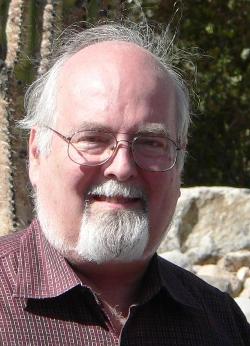
NEOs wth a diameter of four metres (roughly the same as 2008 TC3) strike the Earth annually. Smaller objects of 1.5m diameter arrive at a rate of one per month. An incoming four-metre object is brighter than the lower detection limit of current Spaceguard Survey telescopes for just one to two days. Moreover, the survey is limited to the night sky, favours the northern hemisphere and locations away from the galactic plane and the Moon (whose brightness swamps them). This means that they cover about 35% of the celestial sphere.
Ten years ago this much sky was surveyed once a month – now it is mapped several times per month. This means that current capability gives astronomers an approximately 10% chance of spotting a body like 2008 TC3 – in other words, it might do so once a decade. Monthly impactors are harder still to spot, but as they are also more numerous they might also be found with the same frequency. Larger bodies, like that responsible for the devastating Tunguska event over Siberia 100 years ago, should all be bright enough to provide short-term warning – always assuming, of course, that they come out of the 35% of sky that is being mapped.
Despite this encouraging improvement, Chapman is concerned for the future. The new generation of space-watching telescopes, the Panoramic Survey Telescope And Rapid Response System (Pan-STARRS), will be coming on stream over the next decade. One, in Maui, has already seen first light and is operational. These telescopes will be capable of spotting “once a year” (4-6m diameter) objects as early as 10 days out.
Like Catalina telescopes, the new instruments have relatively wide-angle lenses and are designed principally to perform their central cataloguing role in the NEO monitoring program. Also coming along soon will be the Large Synoptic Survey Telescope (LSST), which should see first light in 2015. “LSST says it will ‘cover the sky’ (i.e., 35% of it)” says Chapman, every five nights; which means that it would be able to detect every monthly incoming meteoroid emerging from that part of the celestial sphere. But for meteoritics, there is a snag.
Despite the capability of the Pan-STARRS instrument, current plans are to report on meteoroids “every few weeks” says Chapman. If this operational protocol is not altered, he warned the MetSoc meeting, most of its potential for tracking final plungers to their impact sites would be lost – as would the opportunity to relay information of incoming objects to a more narrow field instruments equipped with spectroscopes, so that the bodies’ reflected-light could be analysed before leaving space for ever. Connecting particular meteorite classes with asteroid spectra of is one of the main tools for determining where meteorites ultimately come from.
Further reading